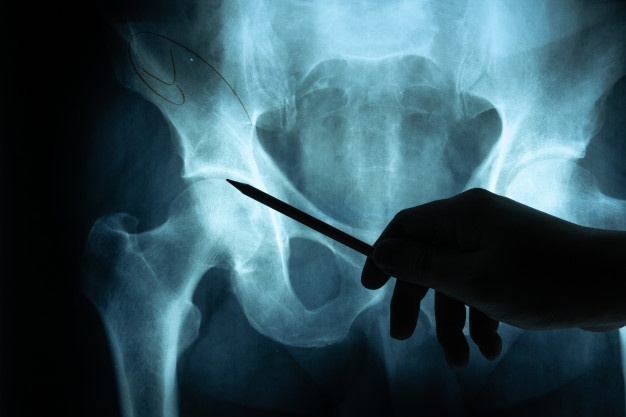Hip fractures (broken hips) are most often caused by a fall in elderly people. It does not have to be a major fall for an elderly person to break a hip. Other ways for a hip to break could be from car accidents or if the bone has become weakened from tumor or infection.
Risk Factors
A broken hip in the elderly can be explained primarily by weak bones and osteoporosis. Elderly patients with osteoporosis are at much higher risk of developing a hip fracture than someone without osteoporosis.
Other risk factors associated with hip fracture are female sex, Caucasian race, slightly built (thin) individuals, and limited physical activity.
What are the symptoms?
– You have severe pain in your hip.
– You cannot bear to put any weight on your leg.
– You have stiffness, bruising, and swelling in your hip.
– Your leg is shortened or turns either inward or outward.
Any time an elderly person falls, and is unable to get up or stand on both legs, a hip fracture should be suspected. Do not try to move the person. Make him or her as comfortable as possible, and call an emergency medical service immediately.
Complications
Complications are very common in patients who sustain a hip fracture. One of the most important reasons for performing surgery on patients who have a hip fracture is to help prevent these complications.
By getting the patient up and out of bed as soon as possible, the risk of complications is diminished. Mortality rates in the first year following a broken hip are around 25%, and the rates are highest in older populations. The cause of mortality following a hip fracture is often due to blood clots, pneumonia, of infection.
Treatment
Treatment of a hip fracture almost always requires surgery. Rehabilitation following treatment for a hip fracture usually begins quickly following surgery. Most commonly, patients will get up with the physical therapist within a few days following surgery. Time for complete healing is usually about 12 weeks, but most patients are walking well before that time.
Hip fracture rehabilitation
The goal of rehabilitation after hip fracture surgery is to help you begin moving as quickly as possible to avoid the serious complications that can happen with being immobilized in bed. If patients require hip surgery, a physical therapist will meet with patients shortly after their procedure to start exercising the hip joint, primarily with gentle movements and then with crutches or a walker. Every patient’s unique hip conditions are evaluated by their physical therapist to develop the best course of post-operative treatment and care.



















